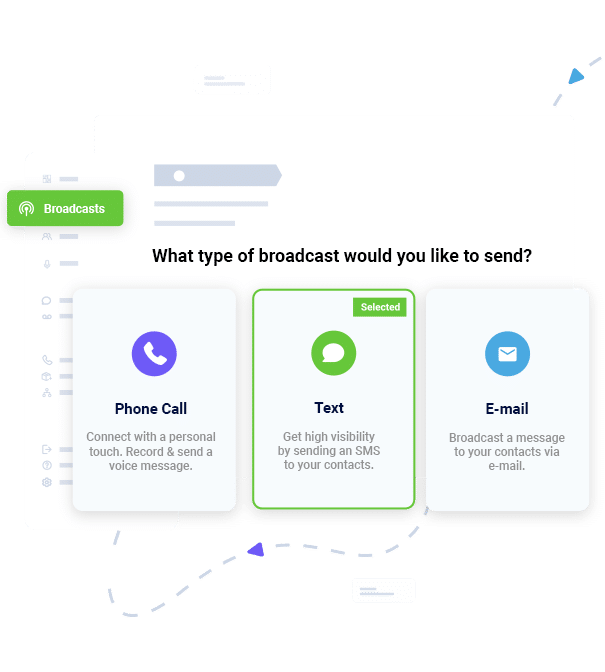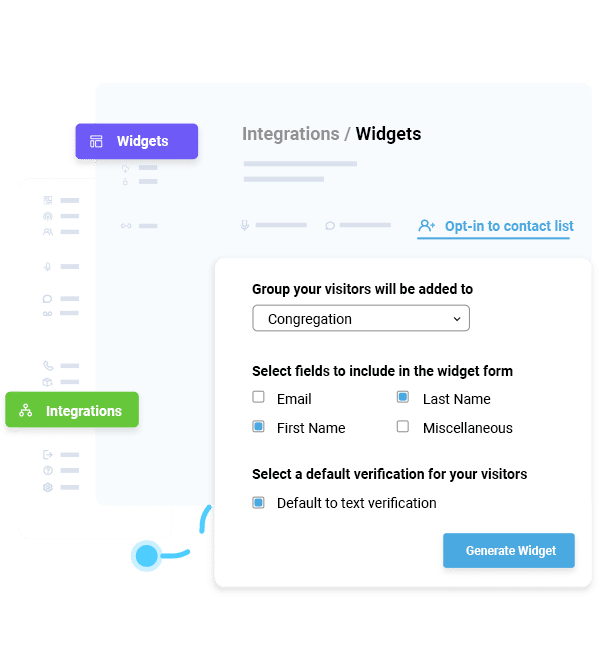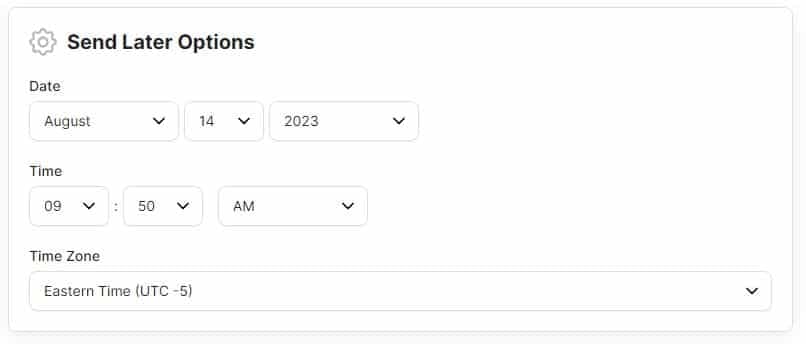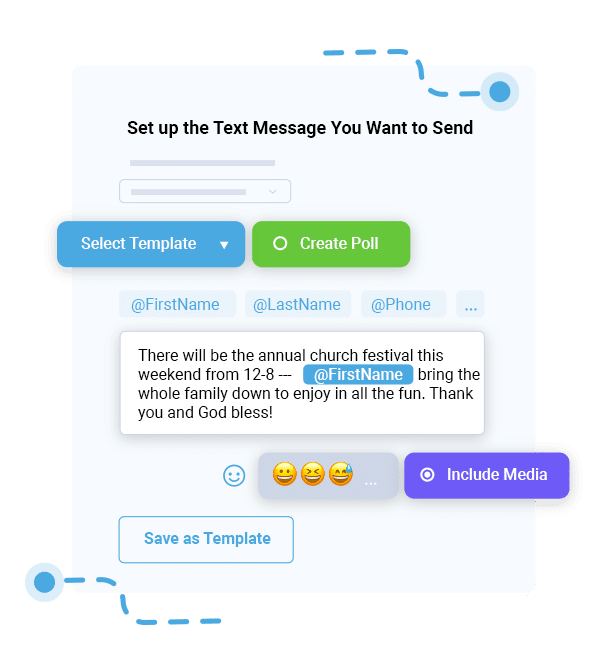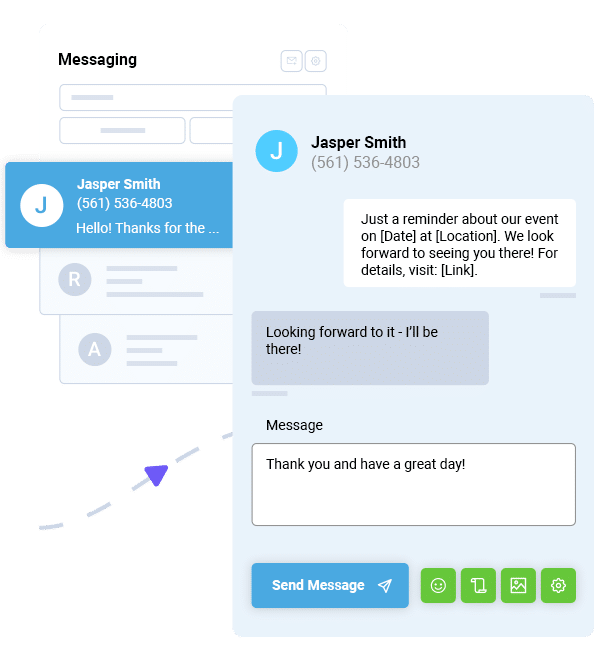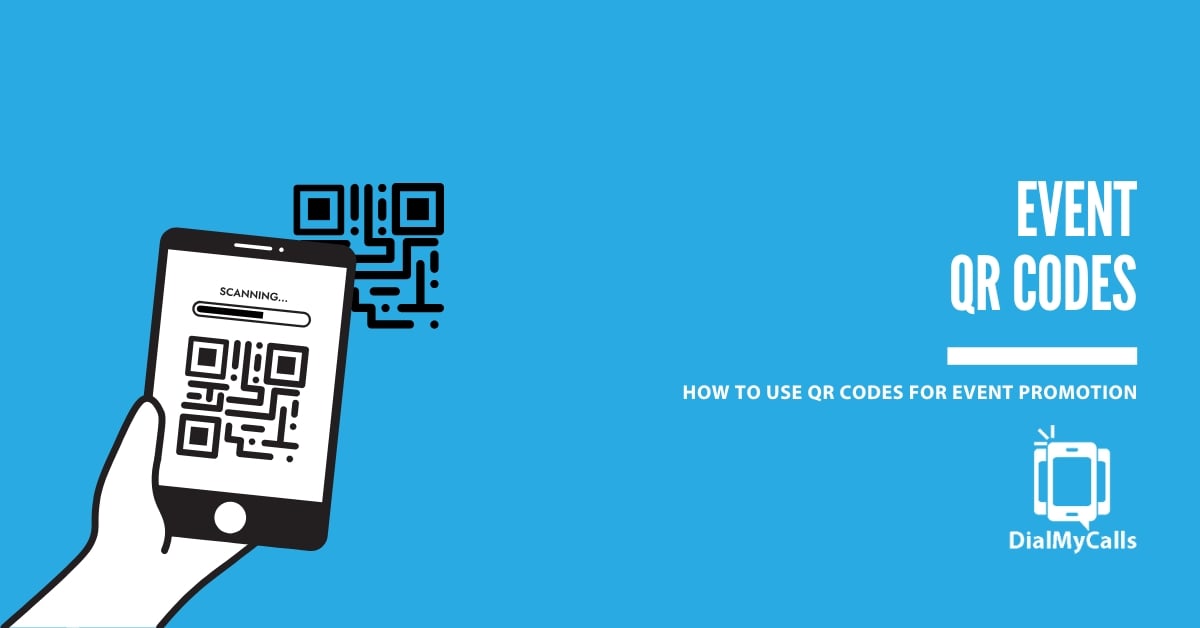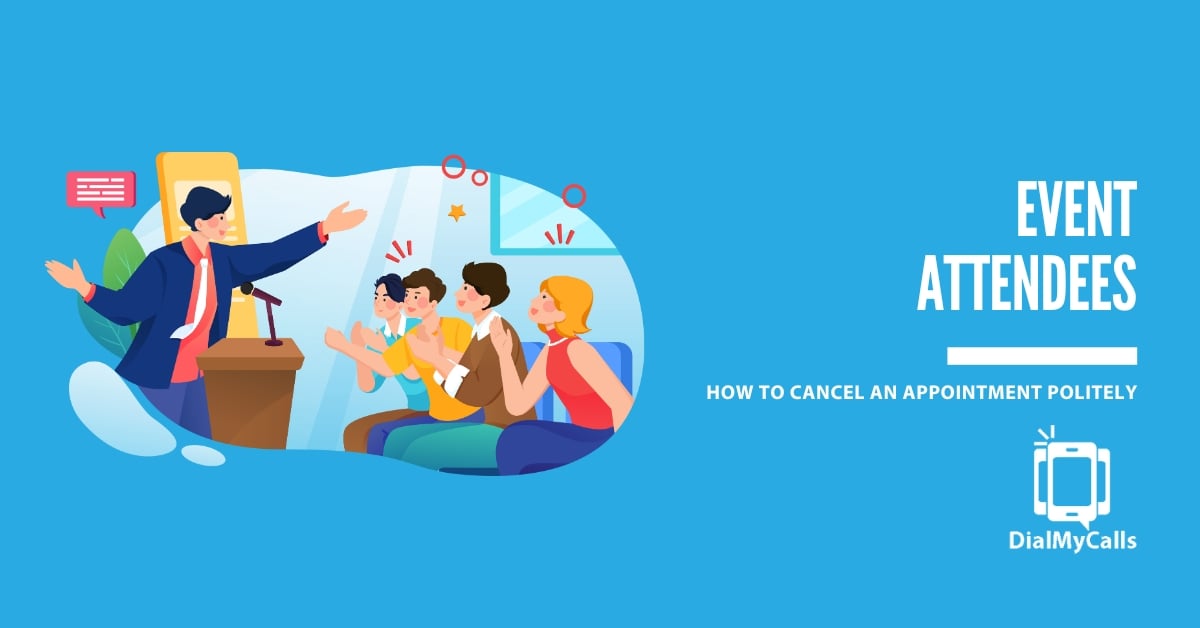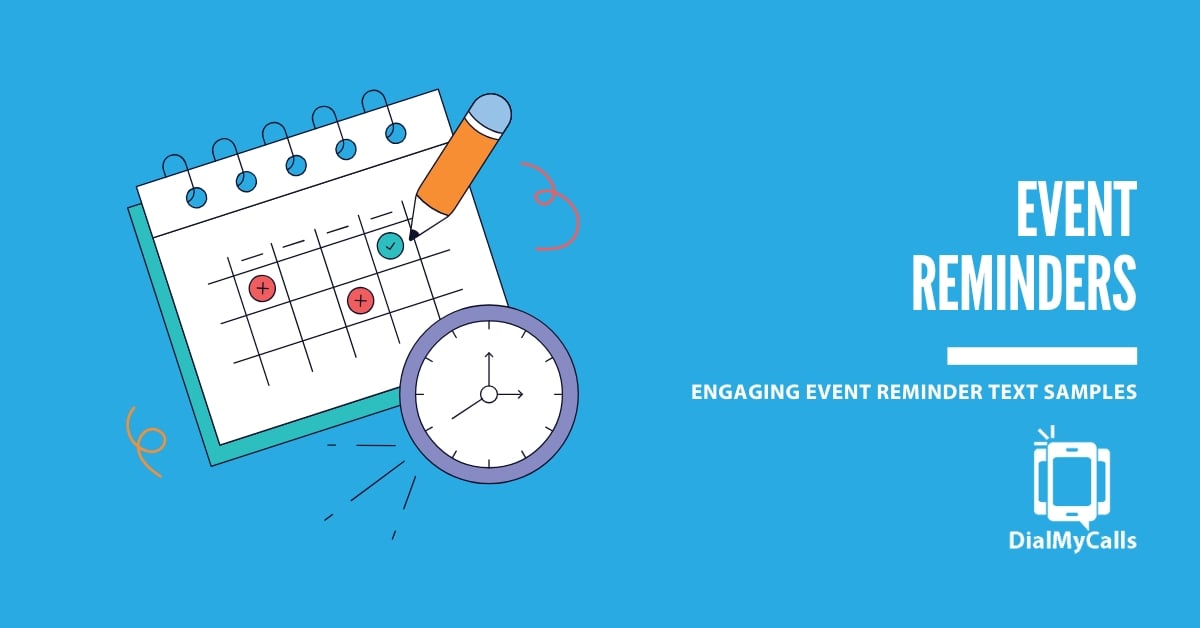Author
Tim Smith is the Media Manager at DialMyCalls, where he has leveraged his expertise in telecommunications, SaaS, SEO optimization, technical writing, and mass communication systems since 2011. Tim is a seasoned professional with over 12 years at DialMyCalls and 15+ years of online writing experience.
Try Using DialMyCalls Right Now
Start For FreeRecent Posts
- 10 Proven Tips To Rapidly Grow Your SMS Subscriber List
- SMS Marketing Metrics: How to Measure and Improve Your Text Campaign’s Success
- What are SMS Carrier Fees and How to Lower Your Costs
- 8 Creative SMS Marketing Ideas to Boost Engagement This Summer
- 15 Ways to Use QR Codes For Event Promotion & Attendee Engagement
Categories
“I am a youth minister and have spent hours in the past calling students individually to remind them of an upcoming event or to get out an urgent announcement. With DialMyCalls.com, I cut that time down to about 1 minute. I also love how I can see exactly who answered live and how long they listened so I know if they heard the whole message. DialMyCalls.com is the best website I have stumbled upon all year! Thanks!”
Central Baptist Church
Try Using DialMyCalls Right Now
Start For FreeTop 5 SMS Marketing Techniques to Enhance Event Attendance
Posted by Tim Smith in Event Reminders on November 12, 2024
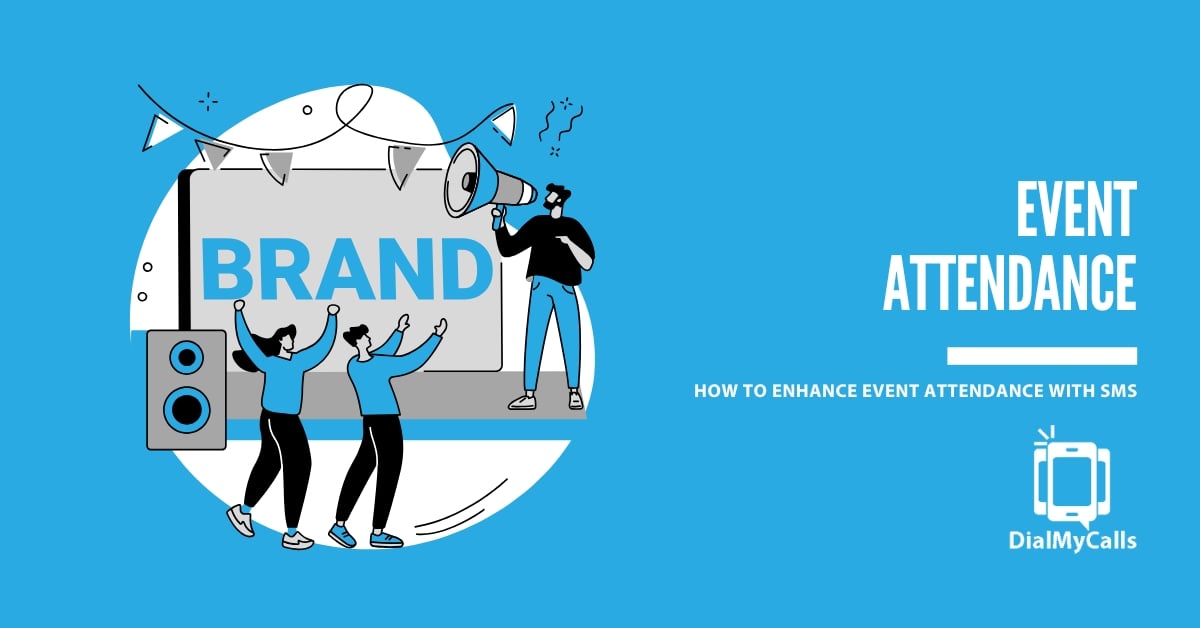
When it comes to event marketing, SMS isn’t just another tool in your kit. It’s the sharpest one available.
Think about it: almost everyone has a phone in their pocket, and texts are opened far more frequently and faster than emails. Forbes points out that SMS has a 98% open rate. Compare that to the 26.8% for email messages. What’s more, 90% of recipients reply to a text message in just three minutes.
When you send a well-timed, personalized text message, it feels like a direct invitation, not another piece of spam to sift through. And that’s what makes SMS marketing so effective for event planners like you.
Remember that your audience is already overwhelmed with marketing messages. From social media ads to banner ads on websites to junk mail in our physical mailboxes, it’s everywhere. And most people have learned to tune a lot of it out. SMS cuts through the noise and gets your message on the most personal device your audience owns: their phones.
Mass Texting, Made Easy
Send Bulk Text Message Campaigns in Seconds
Wondering how to increase attendance at events with SMS messaging? Let’s dig in.
Why SMS Is Key to Boosting Event Attendance
- The Stats Speak for Themselves
- Personalization Matters
- It’s All About Timing
By this point, we’ve probably piqued your interest in the potential that SMS messaging offers. But why should you tap into it? Why harness this particular tool when there are so many others out there? Here’s what you need to know.
1. The Stats Speak for Themselves
As discussed in the introduction to this article, the numbers don’t lie. SMS messages boast a staggering open rate of almost 100%, with most texts being read within minutes of receipt. Compare that to other messaging options open to you.
Email is probably the second-most effective option, but less than 30% of marketing emails are even opened. Those rates decline drastically the farther down the list you go, from social media messages to physical circulars and flyers.
As you can see, SMS is a game-changer for events. Attendees are more likely to notice—and act on—a well-crafted text.
2. Personalization Matters
A text message feels like a conversation. It’s short, direct, and personal. When you send an SMS inviting someone to an event, you’re not shouting into the void. You’re speaking directly to them. That kind of immediacy makes people feel valued—and much more likely to show up. And it’s a world away from other marketing methods.
Let’s face it. Most of us are pretty fed up with marketing emails no matter how personalized they might be. It’s easy to spot an ad masquerading as a personal message. And don’t start on other, less personalized communication methods. Those usually go into the trash unopened.
3. It’s All About Timing
In event planning, timing can make or break attendance. SMS allows you to send timely reminders that keep your event top of mind. Whether it’s a last-minute nudge or a mid-campaign announcement, texts ensure your audience never forget about your event.
That’s impossible with any other marketing channel, even email with its vaunted speed to inbox. So, when immediacy and timely reminders matter, texting is king.
Of course, for all that potential, it’s still possible to get SMS marketing wrong. That’s why we created this guide. Let’s talk about important things to know if you’re struggling with how to increase attendance at events.
5 SMS Marketing Techniques to Enhance Event Attendance
- Build Your Audience List Effectively
- Craft Compelling Messages at Every Stage
- Timing is Everything
- Personalize for Higher Engagement
- Add Interactive Elements to Your Campaigns
Wondering how to increase attendance at events? You’re not alone. It’s the single most common challenge event organizers, marketers, and promoters face. The good news is that there are tons of solutions. Below, you’ll find a list of 5 effective tips to increase fundraising event attendance, as well as 2 bonus tips.
1. Build Your Audience List Effectively
The success of your SMS campaign starts with a strong list. This isn’t just about gathering numbers. It’s about gathering the right numbers. You need to reach out to the right people at the right time with the right message. But what goes into building such a list in the first place? It’s not rocket science.
- Segment Your List: Break your audience into groups—VIPs, first-timers, past attendees, or those who showed interest but didn’t commit. This way, your messages can be tailored to resonate with each group. Never send the same message to multiple groups, because then you lose the personalization that’s so important to the success of SMS.
- Collect Opt-Ins Strategically: During event registration, include a simple checkbox to join your SMS list. Promote opt-ins at every touchpoint: your website, social media, and even during checkout for tickets. Offer something of value in exchange for their opt-in if necessary. You can give away reports, access to behind-the-scenes content, special perks, and rewards, you name it. The more strategic your collection practices, the easier it will be to segment your list.
2. Craft Compelling Messages at Every Stage
Every text you send should serve a purpose. Never send a text without an underlying goal. Each one should be valuable in its own right but must also tie into your larger strategy. Unsure what messaging might work and how to increase attendance at events?
Use these stages to craft messages that engage and inform your audience:
- Initial Announcement: Excite your audience with key details. Let them know the what, where, when, and most importantly, why of your event. If possible, create a series of texts that introduces and expands on all of these topics. Include a compelling CTA like “Reserve your spot now!” to capitalize on the excitement you build.
- Countdown Reminders: Build anticipation with periodic updates. A simple “Just one week to go—are you ready?” keeps the momentum alive. Those reminders don’t just whet people’s appetites. They serve as reminders so that they can make sure the date’s saved on their calendar or share information with someone else who might be interested in the event but not part of your list.
- Last-Minute Nudge: The day before or the morning of the event, remind attendees why they signed up: “We can’t wait to see you at 6 PM tonight. Don’t forget your ticket!” Those last-minute reminders help boost attendance dramatically. You’d be surprised how many people genuinely want to participate in events, but forget.
- Post-Event Follow-Up: Show your appreciation. Thank attendees, share key resources, or ask for feedback to keep the relationship alive. If you have follow-up events, mention those or remind them to keep those dates open for the next annual event. Let them know you’ll be in touch with other event-related information, reminders, and more so that they’ll watch for future messages.
3. Timing is Everything
Your message is only as effective as its timing. The right timing gets you much more attention. The wrong timing could lead people to unsubscribe from receiving your messages, which is never a good thing.
- Optimal Times to Send: Research shows that texts sent mid-morning or mid-afternoon have the highest engagement rates. Avoid sending messages late at night or during peak work hours. People won’t thank you for distractions before bed or interruptions during their workdays.
- Automate Your Schedule: Platforms like DialMyCalls make it easy to plan your entire SMS campaign. Schedule messages ahead of time to hit inboxes exactly when they’ll be noticed. Trying to do everything manually can lead to overload and burnout, and then your campaign will suffer. Work smarter, not harder.
- Plan a Cadence: Create a timeline for your SMS campaign—think two weeks out, one week out, three days before, and day-of reminders. And do your best not to overload your recipients. Too many messages too close together is a surefire way to get people to unsubscribe. So is sending messages to people who never opted into your campaign in the first place (note that sending unsolicited texts is illegal, not just unwanted or unethical).
4. Personalize for Higher Engagement
Generic messages won’t cut it. People respond to texts that feel crafted just for them. People are savvier than ever (or more burned out and jaded depending on how you want to look at it).
That means if your message isn’t personalized and doesn’t feel like it comes from someone familiar, delete is just a swipe away. And it’s all too easy to text “stop” and then the person’s opted out and they’re gone for good. So, how do you personalize your messages for the right impact and higher engagement?
- Dynamic Fields: Use tools that allow you to insert names, event details, or even personalized links into your messages. That saves you the time of having to do this kind of thing manually and ties directly into your audience segmentation strategy.
- Geo-Targeting: If your event is location-specific, include details like maps, parking instructions, or weather updates. These small touches go a long way. Anything you can do to make people’s lives easier will be remembered positively and will reflect on your event and your organization.
5. Add Interactive Elements to Your Campaigns
Engagement doesn’t have to stop at “yes” or “no.” SMS is all about communication, and humans aren’t binary systems. Use this tool to its fullest extent and expand your ability to engage and create memorable experiences.
- Two-Way Messaging: Let attendees RSVP or ask questions directly through SMS. DialMyCalls’ two-way messaging feature makes this seamless. This helps create a seamless experience and avoids the disconnect that happens when someone must change communication channels to ask questions or take another action.
- Surveys and Polls: Gauge interest or preferences before the event. A quick “What session are you most excited about?” can make attendees feel involved. You can also use these tools to help build your next event and boost both excitement and engagement by getting your audience involved in the process.
Bonus Tips: Beyond the Basics
- Ensuring Compliance with SMS Marketing Regulations
- Measuring Success – Metrics You Need to Track
If you’re still wondering how to increase attendance at events, we’ve got two more bonus tips for you.
1. Ensuring Compliance with SMS Marketing Regulations
When dealing with SMS, you’ve got to follow the rules. We mentioned this briefly, but it bears further scrutiny. SMS is a powerful tool but using it the wrong way can backfire and leave you facing fines, a damaged reputation, and a diminished audience.
- Get Opt-In Consent: Always ensure attendees explicitly agree to receive messages from you. If you don’t have explicit consent, don’t message them, even if you can make the case for tacit consent. Your goal should be for every single recipient to recognize your organization and remember giving their permission.
- Respect Frequency: No one likes spam. Space out your messages and only send what’s necessary. Back-to-back-to-back messaging is a great way to erode your list and alienate the very audience you need for success. What frequency is right? It depends. There’s no one-size-fits-all answer here. For most organizations, sending more than 10 to 15 per month per audience member is overkill.
- Offer Opt-Out Options: Make it easy for recipients to unsubscribe with a simple “Reply STOP to opt-out.” While it might seem counterintuitive to make it simple for people to leave, it makes sense. It’s also the law under the TCPA and CTIA. If you fail to do so, not only will you damage your reputation, but it’s entirely possible that you’ll find yourself in legal hot water.
2. Measuring Success – Metrics You Need to Track
What gets measured gets improved. It’s as simple as that. And if you don’t measure, you can’t determine what’s working and what’s not. After your campaign, dig into the numbers:
- Track Open and Click-Through Rates: How many people read your messages, and how many took action?
- Response Rates: Did attendees reply or RSVP through SMS?
- Improve with Insights: Use these metrics to refine future campaigns. For instance, if last-minute reminders boosted attendance, double down on that timing.
Put the Power of SMS to Work for Your Events
Stop wondering how to increase attendance at events. SMS is the secret weapon every event planner needs. With high open rates, immediate reach, and the ability to personalize at scale, it’s a tool that delivers results. Whether you’re organizing a fundraiser, a conference, or a community event, the right SMS campaign can turn your audience from maybe to definitely.
Want to see these strategies in action? Try DialMyCalls for free today and discover how mass texting can transform your event marketing.
Reach Thousands, Instantly
Grow Your Business by Leveraging Mass Texting
